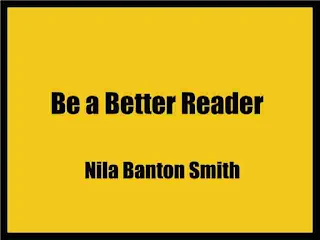Be a Better Reader
Skill Development in Reading Literature, History and Geography, Science, Mathematics
Hundreds of thousands of students have used the first edition Of the be a better reader series with success. Some of the Improvements in the second edition result from this wide class- Room usage of the books with all types of students in all types of Classrooms.
The bulk of the changes, however, have to do with Revisions in the text due to the rapidly changing world. Changes in World conditions particularly affect the content in social studies And science. All selections having to do with these subjects have Been thoroughly updated.
This book is designed (1) to improve the basic common skills Needed in reading all types of material and (2) to develop special Skills needed for effective reading in science, social studies, mathematics, and literature. The unit topics were selected because of their appeal to teen- Agers and because of their frequency of occurrence in junior high And high school textbooks.
The skills are those most often needed In studying text and reference books at these levels. The special Vocabularies include words common to the most widely used texts In science, social studies, and mathematics. Because of these features, this book should light up and reinforce the average school Curriculum. It can be used effectively for either developmental Or remedial instruction.
The teacher's guide which accompanies this book contains Explanations of skills, page-by-page procedures, additional activities, and answers to all questions in the text.
In preparing to be a better reader, a book I, second Edition, additional aids to vocabulary development and syllabic- Tion have been provided. The mathematics selections have been Revised to provide for developmental as well as remedial instruction. The factual matter has been thoroughly updated. Each question In the activities, each answer, and each answer-space has been Restudied to ensure clearness, accuracy, and adequate provision For student answers.
Do you read in the same way when you study science, social studies, mathematics, and literature? You shouldn’t.
You need to use different skills when reading different materials for different purposes. In your science books, you find chapters or parts of chapters that teU about problems in science and how scientists have solved them. Other sections tell about classifications of living things or objects. Others de- scribe processes. Some give you detailed facts about a topic. Then there are directions or experiments, which must be carried out exactly. You should study each of these different types of science material in a different way. This book tells you how to work with each type. In studying social studies material, you need to have highly developed skills in reading maps, graphs, and pictures. Each of these kinds of material calls for a different set of skills.
You need to know how to associate dates with events and remember them in order, how to look for causes and effects, how to grasp and recall detailed facts, and how to do critical reading. Mathematics should be read very differently from literature, social studies, and most science material. Very often students have trouble with mathematics because they don’t know how to read mathematics.
In this book, you will be given a great deal of help in reading problems, as well as in reading and making graphs, interpreting diagrams, and following directions such as you find in your mathematics book. Literature is altogether different from the three subjects previously discussed, and you should use entirely different skills when reading stories and poems. Literature should be read for enjoyment, understanding, and appreciation.
In order to get the most out of literature, you need to put yourself in the place of the characters and live through their experiences with them. You will enjoy doing such things as discussing the feelings and actions of the characters, reading “between the lines” to get deeper meanings, and trying to see the “word pictures” vividly.
Download 13.8 MB - BOOK 1
Download 13.5 MB BOOK 2

